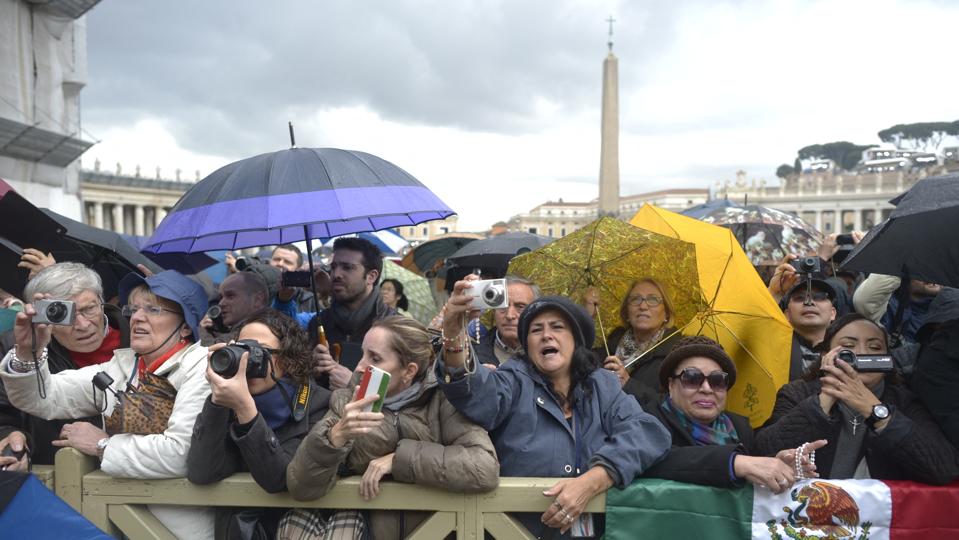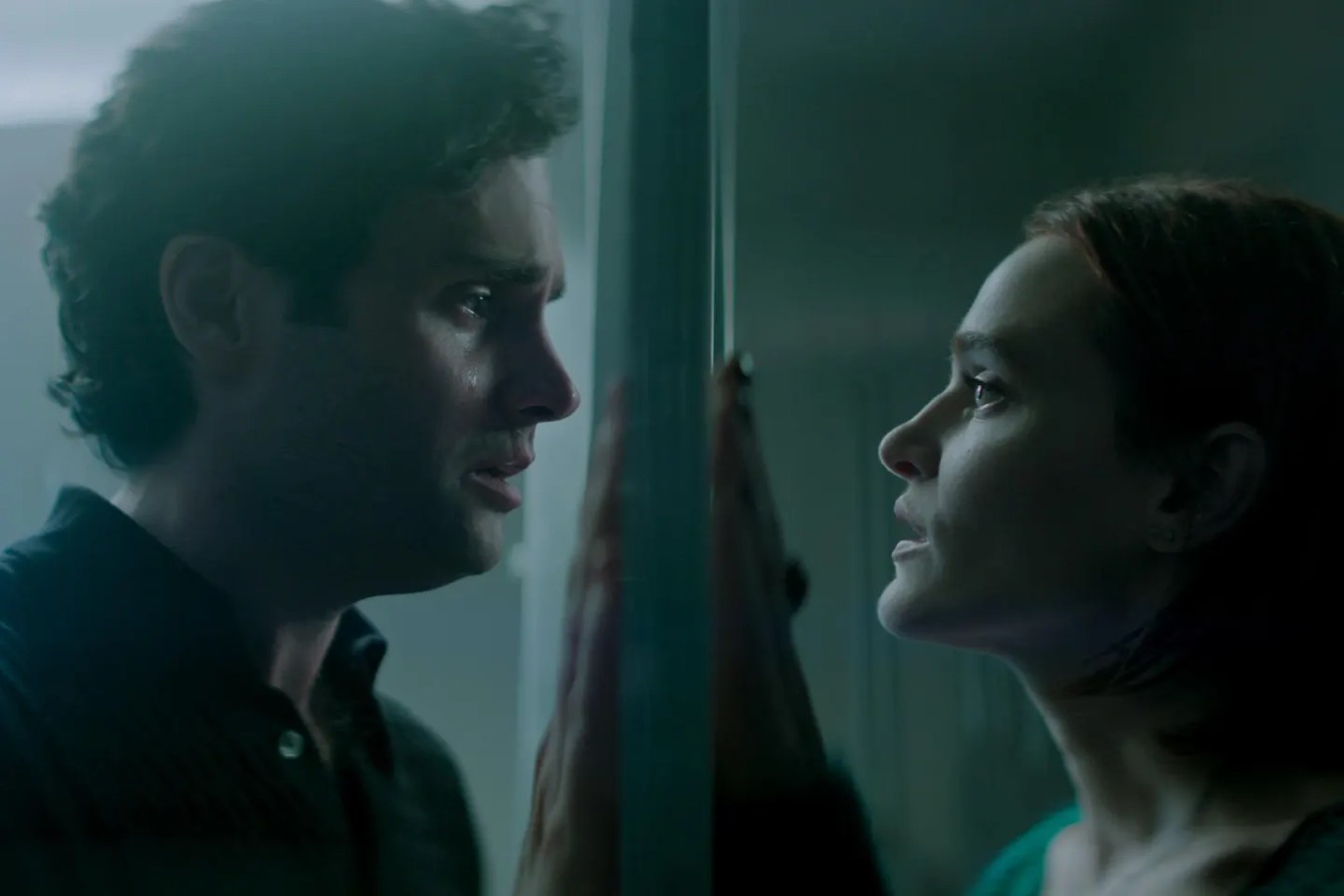The Eternal City is expecting hundreds of thousands of visitors to descend upon St. Peter’s Square, watchful for white smoke to signal the next pope has been elected.

In 2013, tourists gathered on St Peter’s Square watching for white smoke to announce the election of Cardinal Jorge Mario Bergoglio of Argentina, who took the name Pope Francis. (Photo by JOHANNES EISELE)
AFP via Getty Images
Key Takeaways
- On Friday, the day before the pope’s funeral, flight searches on Expedia for Rome for the dates of May 5-14 were up more than 345% from the U.S. and more than 1,000% from Mexico.
- On Monday, two days after Pope Francis’ funeral, the Vatican announced the next papal conclave—the centuries-old secret ritual where the Catholic Church chooses a successor—will begin on May 7.
- In the past, conclaves have attracted enormous throngs of tourists who hope to be standing in St. Peter’s Square when the new pope emerges and greets the crowd.
- Airfare from New York’s JFK airport to Rome over those dates was slightly above average, ranging from $558-$629 compared to the historical average of $511-$561 during the same time frame, according to Expedia’s Flight Deals tool, which predicts airfares will rise for that route.
- For the papal conclave in 2013, which elected Pope Francis, Rome had prepared for hundreds of thousands of tourists, an official with the Italian government’s Civil Protection service told the Associated Press at the time.
- With the Catholic Church’s Jubilee 2025 already underway and the Oscar-nominated film ”Conclave” sparking renewed attention, interest in papal traditions is extremely high.
Key Background
Following Pope Francis’ funeral and burial at the church of Santa Maria Maggiore outside the Vatican walls in Rome, the Catholic Church is preparing to elect a new pope. The conclave will take place in the Vatican’s Sistine Chapel, which will remain closed to the public from Monday until the vote ends. The chapel’s ceilings are adorned with scenes painted between 1508 and 1512 from the Old and New Testaments, including “The Creation of Adam,” in which God reaches with his finger to touch the outstretched hand of Adam.
What Happens During The Conclave?
Of the 252 cardinals worldwide, 135 cardinal electors are eligible to vote for the new pope. A cardinal must be under age 80 to participate in the election. If voting begins on the afternoon of the first day, there will be only one ballot that day. On subsequent days, four ballots are held daily—two in the morning and two in the afternoon—until one candidate receives two-thirds of the votes. After the votes are counted, all ballots are burned. If the ballot was inconclusive, a chimney over the Sistine Chapel emits black smoke. If a pope is elected, white smoke will billow out of the chimney. Then the new leader of the world’s 1.4 billion Catholics will emerge onto the balcony at St. Peter’s Basilica as a senior cardinal cries: “Habemus Papam!,” which is Latin for “We have a pope!”
Big Number
More than 250,000. That’s how many mourners filed past Pope Francis’s coffin during a “simplified” funeral service at the Vatican on Saturday.
What We Don’t Know
How long it will take to elect the next pope. German Cardinal Reinhard Marx told reporters Saturday the conclave would last just “a few days,” Agence France-Presse reported. But other cardinals are not as confident in a speedy process. “I believe that if Francis has been the pope of surprises, this conclave will be too, as it is not at all predictable,” Cardinal Jose Cobo, the Archbishop of Madrid, told El Pais.


